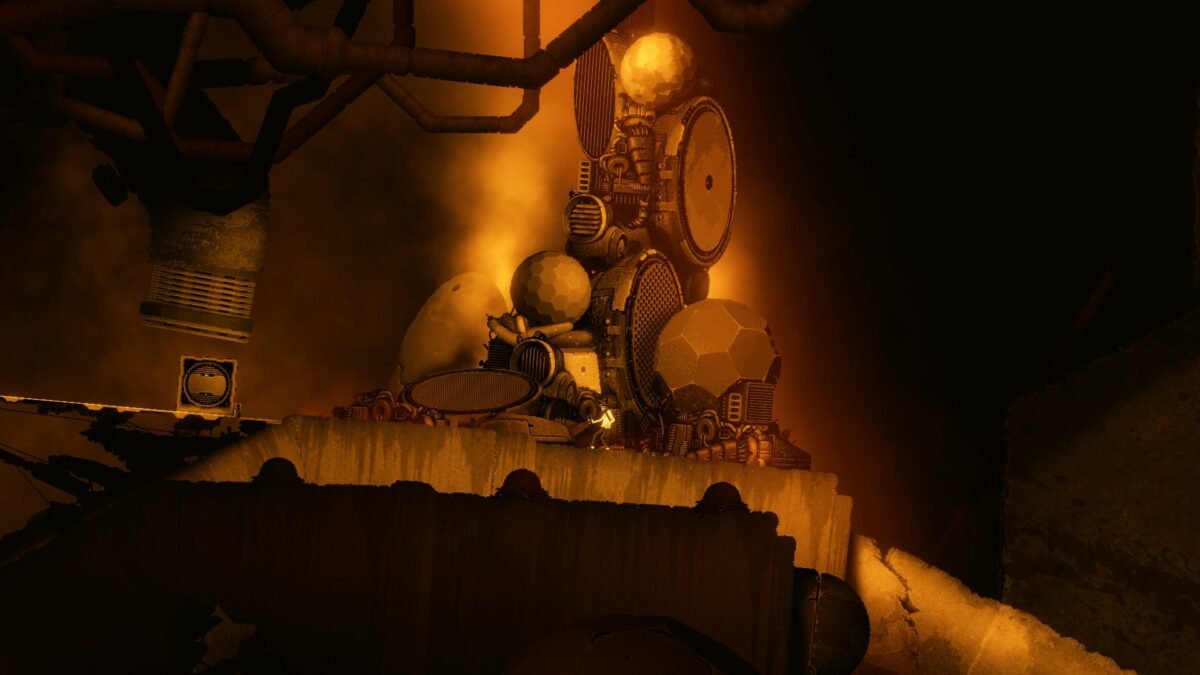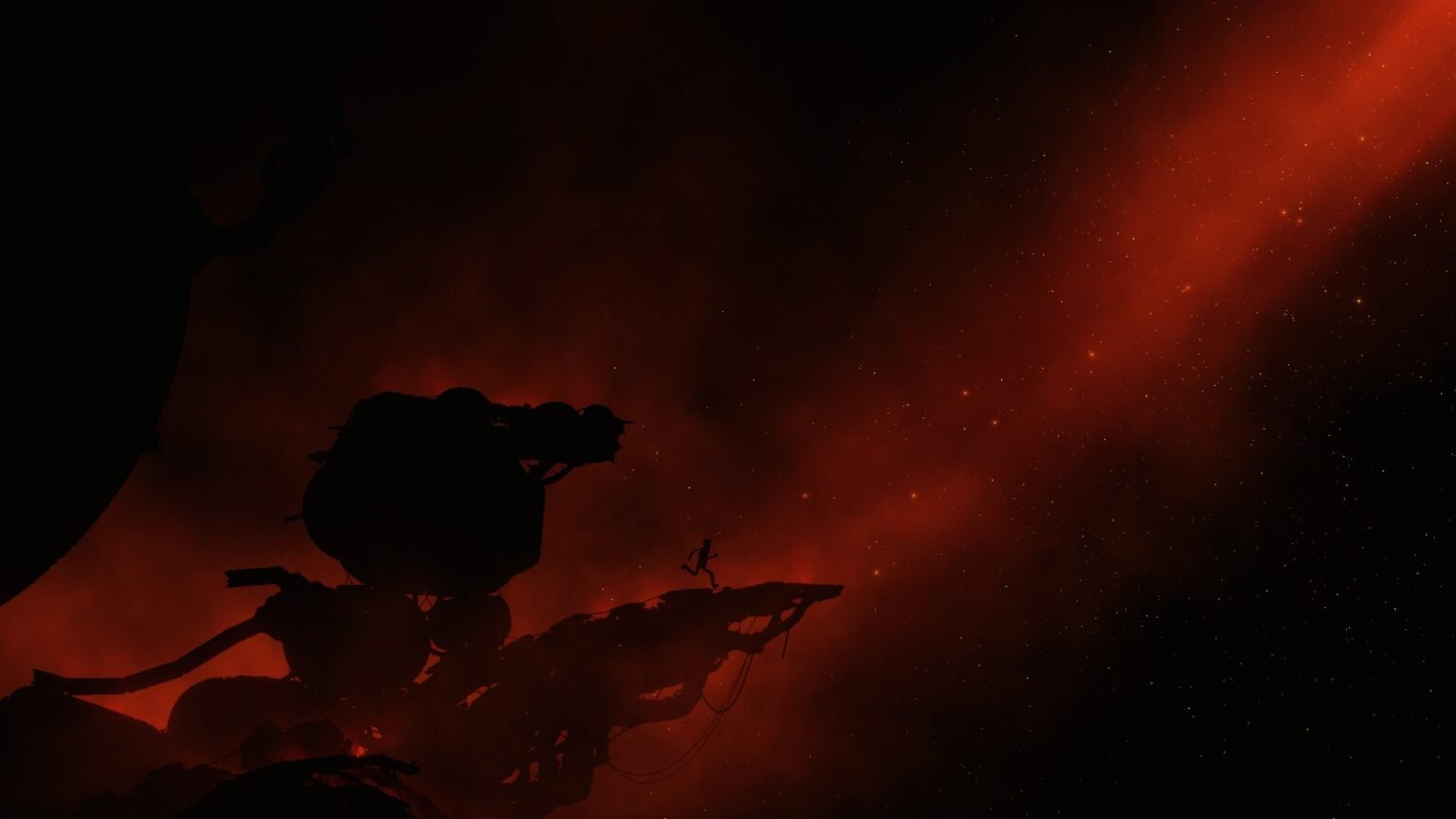Bionic Bay is a 2D side scroller created by the Psychoflow Studio, Mureena Oy. Bionic Bay might look a bit familiar to anyone who has played the Badland games, as the designer of the Badlands games, Juhana Myllys (art and design), is behind the Bionic Bay project.
Recently, 2D platformers have raised the bar on quality by delivering titles that tell intriguing stories while making no sacrifice on gameplay, and the Bionic Bay demo convinces me that it is a strong candidate to be added to this list. The game thrusts you into the gameplay after a quick intro, you will quickly find yourself controlling a slow-moving scientist.
Creativity On Display

Unlike other 2D side scrollers, Bionic Bay is a bit fast-paced. Your character moves fast after he gains the power to sprint. And each section of the game doesn’t lean on repetition; the puzzles and the navigation have been different. The visual aesthetic also changes from one section to another without carrying any of the same elements.
The major highlight of the game’s demo is how small it makes you feel in this vast dystopian world. The character is tiny, and the world seems to swallow him nearly on every screen. The team has done an excellent job in creating the feeling of loneliness in a mechanical, empty world.
Bionic Bay has nailed the artistic flair on nearly every background. The disturbing industrial landscape merged with the bright orange to yellow color is a treat to the eyes. Once in a while, while playing the demo, I came across a few landmarks that made the world feel a bit more Lovecraftian, as I witnessed a strange merger of mechanical pieces of equipment, all placed in a non-sequential fashion: A visual representation of work not meant to be understood by humans but by an invisible force.
There are also times when the game lets the color shine while painting everything black. So I could only see my character and every object on the screen in the color black, while the background danced between orange and yellow hues. These are some of the times the game came alive with new, pleasing scenery.
Roll and Jump to Avoid Death

The demo does an excellent job in showcasing the basic elements of the game: run, roll, and roll-jump. Mixing all of them will create another faster move. It’s all about getting a hang of the timing to help move faster through the obstacles.
The first 15 minutes of the game were all about running and rolling through the obstacles. While all other movements are pretty smooth, one aspect of the game that stood apart from the rest was the jump animation. Most times, you find yourself staring at the wall, and mashing the jump button lifts the character upwards awkwardly. There is no fluid jump animation, and button-mashing seems to be the only way.
After going through the first section, you will find yourself in the outside world, but it doesn’t last long, you will get sucked right back into the underground section. The vibe between the outside and the underground world has a distinct identity. The world outside is calm as the sun rays make every part of the game peaceful, however, the underground is all about causing noise via background and sound. A fellow Silent Hill player might appreciate the transition between worlds.
A 5 ft jump can kill you most times, and sometimes, while solving the puzzle, you will take a higher jump and you will survive the fall. Here, the game dictates whether you can survive the fall from the jump or not. Plenty of times, I hesitate to even jump, worrying about death, not realizing I had to jump because it’s the proper path.
Power to Teleport
After 15 minutes, the game introduced teleportation power. This is where you can swap yourself to any object you interact with in the world. If a box is blocking your path, then you can teleport to the box, and the box will teleport to your previous location. Which I did mess up, as I used a box to teleport myself to a higher floor, then I accidentally pressed the teleport key again, which swapped me to my previous location and placed the box on the ledge! In such cases, you then jump down a hole or hit restart to start from the checkpoint.
Thankfully, the game’s checkpoint system is generous; if you fail at a puzzle, the game will spawn you in the puzzle section right away without any delay. The demo ended for me at 33 minutes, followed by the trailer. Compared to the demo, the trailer had more mechanics, unique puzzles, and atmosphere. After watching the trailer, the entire demo feels like a small appetizer for the full meal.
Compete Against the World

The game also features an Online Mod, where you can compete with other players by setting up the fastest time for each zone. You will not be actively competing against other players, instead, you will see their ghost following you through the level. They will help you keep track of your movements. If you are faster, then you will stay ahead of all the other ghosts or players. Online mod is available for everyone after completing the demo, but I was not able to test it completely because of a lack of players.
Conclusion
What Works:
- The world design
- The gameplay flow
- The loneliness through visual aesthetics
- The ambience of the industrial underground
What Doesn’t
- The jumping animation feels a bit clunky
- A 5 ft jump can kill you, but only if the game didn’t allow that to happen..
The game demo will be worth your time, as it displays a world that yearns for your visit. While the gameplay element might feel clunky at first, the fast-paced scenery of the game will keep you engaged in the game long enough to reach the end timer.


